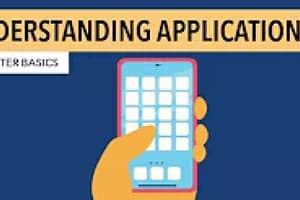Podcast
Questions and Answers
Define a computer.
Define a computer.
An electronic machine that processes data and produces output.
What is the binary number system?
What is the binary number system?
A system where data is represented using only two symbols - 0 and 1.
Data is transformed into information during the information process cycle.
Data is transformed into information during the information process cycle.
True (A)
What is the function of the Control Unit in a CPU?
What is the function of the Control Unit in a CPU?
Data in computer terminology refer to raw facts and figures, while information refers to ______________ data.
Data in computer terminology refer to raw facts and figures, while information refers to ______________ data.
Flashcards are hidden until you start studying
Study Notes
Computer Overview
- Computers are used in various applications, including complex calculations, engineering simulations, teaching, printing, and recreational games.
- They have made a significant impact in office and business environments due to their ability to process, store, and retrieve data efficiently.
- The areas of computer applications are limited only by human creativity and imagination.
- Any task that can be performed systematically can be performed by a computer.
What is a Computer?
- A computer is an electronic machine that takes input, processes data, and produces output.
- It can be expanded as C – Commonly, O – Operating, M – Machine, P – Particularly, U – Used for, T – Trade, and E – Educational, R – Research.
- A computer is an electronic device that performs various operations according to a set of instructions called a program.
- It can access and process data millions of times faster than humans.
Data vs Information
- Data refers to raw facts and figures, while information is the result of processing data into meaningful and useful form.
- Data is aggregated and summarized to form information.
- The information processing cycle involves turning data into information.
How Computers Represent Data?
- Computers use binary numbers, which are a series of 1s and 0s, to represent data.
- A single unit of data is called a bit, which has a value of 1 or 0.
- Bits are grouped together to form bytes, which represent larger pieces of data such as letters of the alphabet.
- Units of memory, such as kilobyte, megabyte, gigabyte, and terabyte, are used to measure large amounts of data.
Computer System
- When a computer is switched on, it performs a Power-On Self-Test (POST) to check the integrity of its components.
- The ROM-BIOS (Read-Only Memory-Basic Input Output Services) is read and executed to check for the operating system.
- The boot strap loader is loaded into the main memory, and its instructions are executed to boot up the operating system.
Functional Components of a Computer
- A computer follows the Input-Process-Output cycle.
- The input unit takes input from devices such as keyboards, mice, and microphones, and converts it into binary form.
- The central processing unit (CPU) is the brain of the computer, guiding and directing its performance.
- The CPU consists of two components: the Arithmetic Logic Unit (ALU) and the Control Unit (CU).
Arithmetic Logic Unit (ALU)
- The ALU performs arithmetic and logic operations, such as addition, subtraction, multiplication, and division.
- It receives numbers from memory, performs the operation, and puts the result back in memory.
Control Unit (CU)
- The CU controls and guides the flow of data and instructions between the CPU, memory, and input/output devices.
- It sends control signals to execute the required operations.
- The CU also executes program instructions from memory.
Output Unit
- The output unit is formed by output devices such as monitors, printers, and speakers.
- It takes the output from the CPU and converts it into a form that can be understood by humans.
Memory
- The memory is where data and instructions are stored before, during, and after processing.
- All data and instructions must be placed in primary memory (RAM) before the CPU can process them.
Software
- Software is a set of instructions or programs that the computer uses to accomplish certain goals.
- Both hardware and software process data and make it more orderly, timely, or accurate.
Hardware
- Hardware is the physical equipment in the computer system, including input devices, processing units, output devices, and storage devices.
- There are four basic categories of hardware: input, processing, output, and storage.
People, Procedures, and Data
- People provide real meaning to the results of computer processing.
- Procedures are instructions telling people how to use and operate a computer system.
- Data is the raw material to be processed by the software and hardware.
Studying That Suits You
Use AI to generate personalized quizzes and flashcards to suit your learning preferences.



